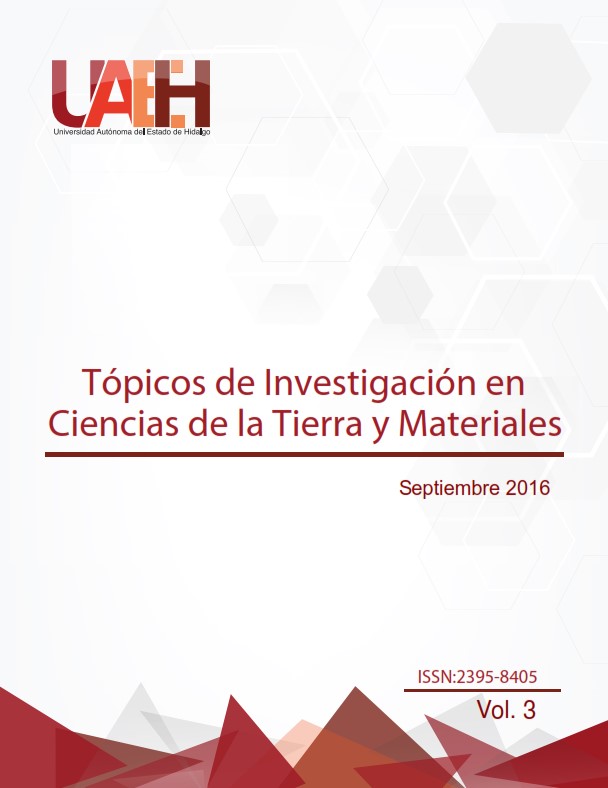Effect of thermochemical borurization treatment on adherence and surface roughness of DIN UC1 steel
DOI:
https://doi.org/10.29057/aactm.v3i3.9797Keywords:
Adherence, boronizing, roughness, steel, thermochemicalAbstract
In this paper the effect of thermochemical treatment of borurización on the adhesion and surface roughness of the boride layer formed on steel DIN UC1 was evaluated. The process was carried out by packing at temperatures of 1073, 1173, 1223 and 1273 K, to the times of 2, 3, 3.5 and 4 hours. The phases present were identified by X-ray diffraction, confirming the presence of a single phase composed of Fe2B layer. In the adhesion test, simulated in COMSOL 5.0®; was observed increasing of the length of the tread and the von Mises stress, with the growth of 26.48 to 75 of layer thickness microns, independently of selected steel. The length of the footprint, calculated, found between 1139.75 and 1314.60 μm, this indicates that the resistance increases borurización cutting steel creep effort and therefore adhesion to the substrate layer. Regarding the roughness increasing treatment time roughness decreased, except for the treatment to 1223 K and 3.5 hours where the roughness increased, this because the process was performed in the transition phase ferrite austenite.
Downloads
Publication Facts
Reviewer profiles N/A
Author statements
Indexed in
- Academic society
- N/A
References
[2] F. Findik: Materials and Design, 2014, vol. 57, pp. 218-244.
[3] I. A. Bataev, A. A. Golkovskii, A. A. Batev, R. A. Dostovalov, A. I. Popelyukh and E. A. Drobyaz: Surface and Coatings, 2014, vol. 242, pp. 164-169.
[4] M. Reza Bateni, J. A. Szpunar, X. Wang and D. Y. Li: Wear, 2006, vol. 260, pp. 116-122.
[5] E. Garcia-Bustos, M. A. Figueroa, G. Rodríguez-Castro, O. A. Gómez-Vargas, E. A. Gallardo-Hernández and I. C. Campos-Silva: Surface & Coatings Technology, 2013, vol. 215, pp. 241-246.
[6] E. P. Becker: Tribology International, 2004, vol. 37, pp. 569-575.
[7] G. Li, J. Chen and D. Guan: Tribology International, 2010, vol. 43, pp. 2216-2221.
[8] M. Tabur, M. Izciler, F. Gul and I. Karacan: Wear, 2009, vol. 266, pp. 1106-1112.
[9] S. V. Dorozkhin: Biomaterials, 2010, vol. 31, nº 7, pp. 1465-1485.
[10] M. Keddam, M. Kulka, N. Makuch, A. Pertek and L. Maldzinski: Applied Surface Science, 2014, vol. 298, pp. 155-163.
[11] ASM: Handbook Volume 4 Surface Engineering, ASM International, USA,1994, pp. 560-570.
[12] M. Kul, K. O. Oskay, A. Temizkan, B. Karaca, L. C. Kumruoglu and B. Topçu: Vacuum, 2016, vol. 126, pp. 80-85.
[13] M. Kulka, A. Pertek and N. Makuch: Materials Science and Engineering, 2011, vol. 528, pp. 8641-8650.
[14] G. Kartal, S. Timur, V. Sista, O. L. Eryilmaz and A. Erdemir: Surface & Coatings Technology, 2011, vol. 206, pp. 2005-2011.
[15] K. G. Anthymidis, N. Maragoudakis, G. Stergioudis, O. Haidar and D. N. Tsipas: Materials Letters, 2003, vol. 57, pp. 2399-2403.
[16] V. Domnich: J. Am. Ceram. Soc., 2011, vol. 94, nº 11, pp. 3605-3628.
[17] A. Márquez-Herrera, J. L. Fernández-Muñoz, M. Zapata-Torres, M. Melendez-Lira and P. Cruz- Alcantar: Surface & Coatings Technology, 2014, vol. 254, pp. 433-439.


















